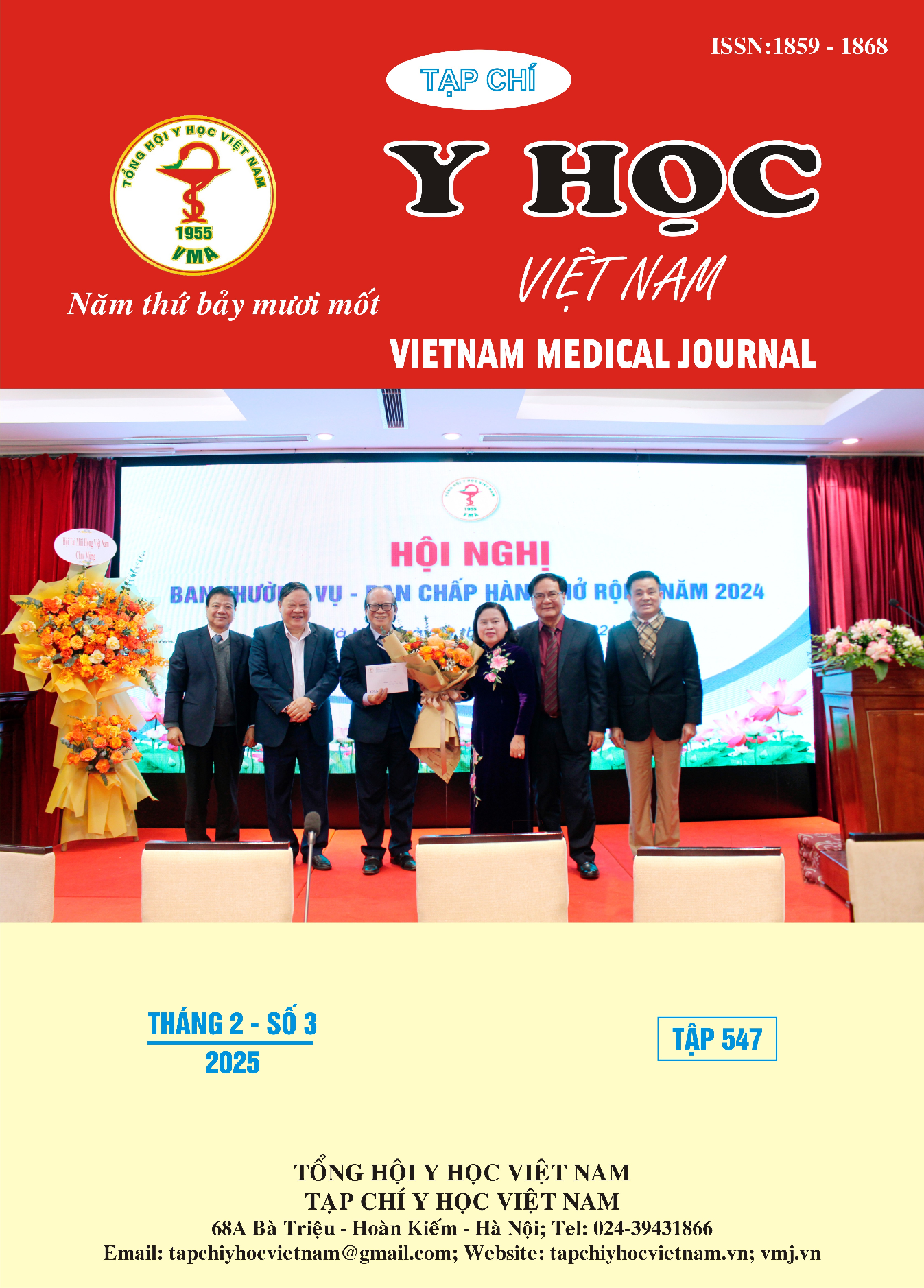CHARACTERISTICS OF KIDNEY TUMORS IN ROBOT - ASSISTED RADICAL NEPHRECTOMY FOR TREATMENT OF RENAL CELL CARCINOMA
Main Article Content
Abstract
Introduction: To survey on characteristics of kidney tumors in robot - assisted radical nephrectomy in the treatment of renal cell carcinoma at Binh Dan Hospital. Patients and methods: We analyzed data from 25 patients with a diagnosis of kidney tumor who underwent robot-assisted radical nephrectomy at Binh Dan Hospital from December 2023 to October 2024. Characteristics of kidney tumors through imaging, surgical procedures as well as related variables were recorded and analyzed. Results: Recorded 25 patients (14 men, 11 women, male/female ratio: 1.3/1, average age 59.5 years; range from 35 to 70) treated with radical nephrectomy using robotic surgery. Kidney tumors were located on the left side in 13 cases (52%), on the right side in 12 cases (48%). Tumors were located in the upper pole in 6 cases (24%), in the lower pole in 10 cases (40%), and in the middle of the kidney in 9 cases (36%). Kidney tumor size is 74 ± 39mm, including 5 cases of stage I (pT1, 20%), 12 cases of stage II (pT2, 48%), 8 cases of stage III (pT2bN1 and pT3, 32 %). Pathological results recorded 25 cases of renal cell carcinoma, including: 18 patients with clear cell type (72%), 5 are papillary type (20%) and 2 chromophobe cells (4%). Conclusion: Renal cell carcinoma in robot - assisted radical nephrectomy is mainly stage II (48%) and stage III (32%) with an average tumor size of 74mm. Postoperative pathology results were mainly clear cell carcinoma (72%) and papillary type (20%).
Article Details
Keywords
Renal cell carcinoma, tumor kidney, robot - assisted radical nephrectomy
References
2. Motzer RJ, Jonasch E, Agarwa N et al, "NCCN Clinical Practice Guidelines in Oncology: Kidney Cancer", National Comprehensive Cancer Network, Version 1, 2025.
3. Abaza R, "Robotic Radical Nephrectomy", Robotic Surgery, Springer International Publishing AG 2018, pp. 71 - 77. doi: 10.1007/978-3-319-65864-3.
4. Stout TE, Gellhaus PT et al, "Robotic Partial vs Radical Nephrectomy for Clinical T3a Tumors: A Narrative Review", Journal Of Endourology, Volume 37, Number 9 (2023), pp. 978 – 985. doi: 10.1089/end.2023.0173.
5. Gershman B, Bukavina L, Chen Z, et al. The association of robot - assisted versus pure laparoscopic radical nephrectomy with perioperative outcomes and hospital costs. Eur Urol Focus. 2020;6, pp. 305 - 312.
6. Klingler DW, Hemstreet GP, Balaji KC et al, "Feasibility of robotic radical nephrectomy initial results of single-institution pilot study", J Urology, 65, 2005, pp. 1086 - 1089.
7. Jeong IG, Khandwala YS, Kim JH, et al, "Association of robotic-assisted vs laparoscopic radical nephrectomy with perioperative outcomes and health care costs", JAMA, 318, 2017,
pp. 1561 - 1568.
8. Davila HH., Storey RE., Rose MC. et al, "Robotic-assisted laparoscopic radical nephrectomy using the Da Vinci Si system: how to improve surgeon autonomy. Our step-by-step technique", J Robotic Surg, 10, 2016, pp . 285 – 288. DOI 10.1007/s11701-016-0608-6.
9. Anele UA, Marchioni M, Yang B et al, "Robotic versus laparoscopic radical nephrectomy: a large multi- institutional analysis", World J Urol, 37(11), 2019, pp. 2439 – 2450. doi: 10.1007/ s00345-019-02657-2.
10. Shen D, Du S, Huang Q, et al. A modified sequential vascular control strategy in robot-assisted level III-IV inferior vena cava thrombectomy: initial series mimicking the open ‘milking’ technique principle. BJU Int. 2020, 126, pp. 447 - 456.


